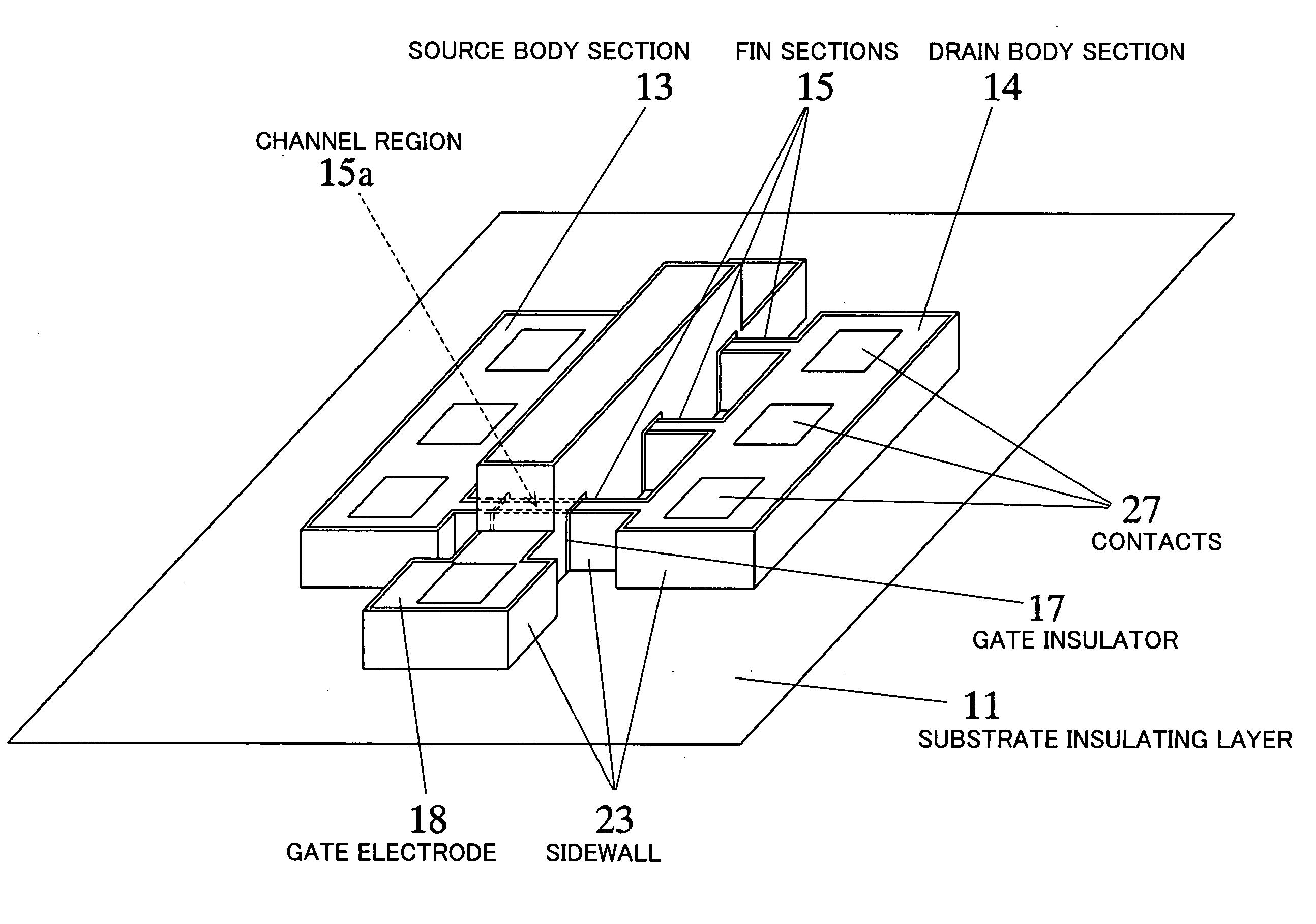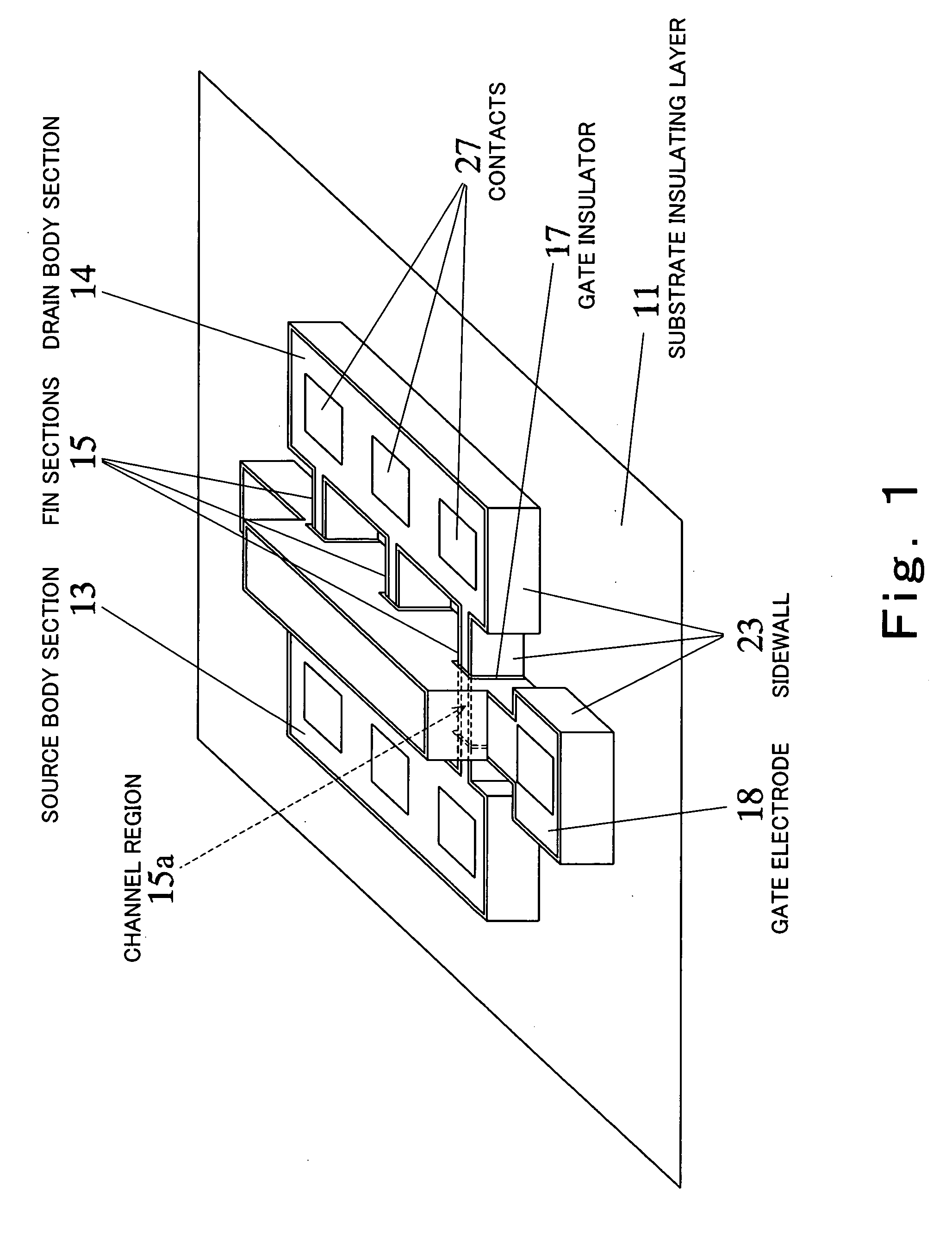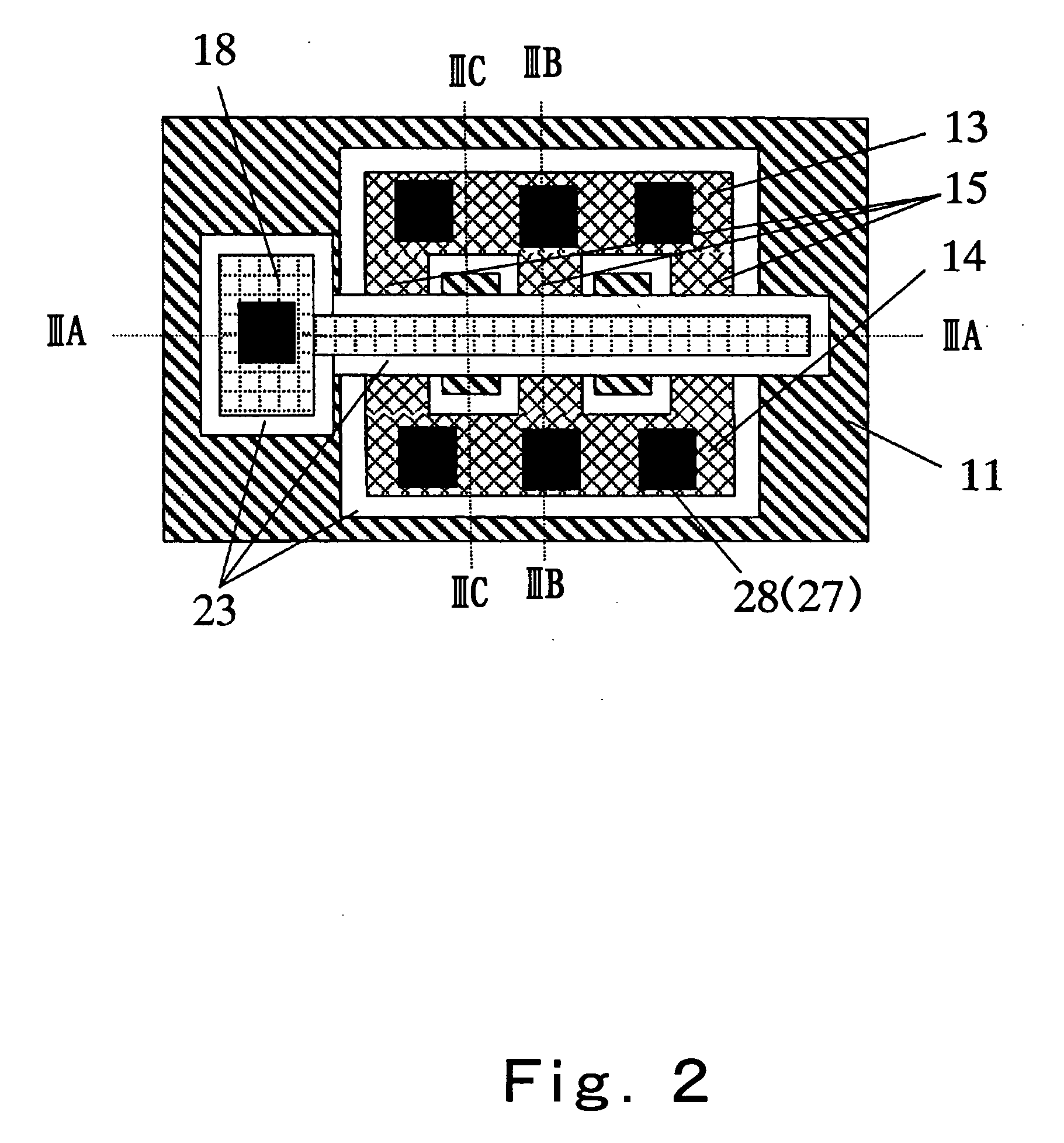Semiconductor device and method of fabricating the same
- Summary
- Abstract
- Description
- Claims
- Application Information
AI Technical Summary
Benefits of technology
Problems solved by technology
Method used
Image
Examples
first embodiment
[0050]FIG. 1 is a perspective view schematically showing the construction of a semiconductor device according to a first embodiment of the present invention.
[0051] As shown in FIG. 1, the semiconductor device according to this embodiment comprises a fin FET having as major components thereof a source body section (first body section) 13, a drain body section (second body section) 14, a fin section (connecting section) 15, a gate insulator (second insulating layer) 17, and a gate electrode 18. In FIG. 1, such components as a silicide layer, an interlayer insulator and interconnections are not shown.
[0052] The source body section 13 and the drain body section 14 are each formed into a rectangular parallelepiped shape and are positioned opposite to each other on a substrate insulating layer 11. A plurality of (three in the figure) plate-shaped fin sections 15 stand as spaced from each other on the substrate insulating layer (first insulating layer) in such a manner that the opposite ...
first example
[0084] Hereinafter, a semiconductor device and a fabrication method thereof according to a first example will be described with reference to FIGS. 4A to 8C.
[0085] A semiconductor substrate 101 is prepared in the process illustrated in FIGS. 4A to 4C. Used as the semiconductor substrate 101 is, for example, a SGOI (Silicon Germanium on Insulator) substrate comprising a silicon layer 10, a buried oxide film (substrate insulating layer (thickness: not more than substantially 400 nm)), and a lattice-relaxed silicon-germanium layer 12′ (germanium concentration: 30%, thickness: 100 nm) formed on the buried oxide film.
[0086] In the subsequent process steps illustrated in FIGS. 5A to 5C, firstly, a device region is defined. Specifically, a silicon oxide film, which has been deposited over the entire substrate surface by plasma CVD (Chemical Vapor Deposition) at substantially 600° C., is patterned into a hard mask by dry etching with a resist mask. A size of the hard mask is possible to ad...
second embodiment
[0100]FIG. 10 is a plan view showing the construction of a semiconductor device according to a second embodiment of the present invention; and FIGS. 11A to 11C are sectional views taken on lines XIA-XIA, XIB-XIIB and XIC-XIC, respectively, of FIG. 10. FIGS. 11A to 11C are drawn by appropriately reducing or enlarging the horizontal dimensions (parallel with the principal surface of a substrate 101) of the semiconductor device shown in the plan view at FIG. 10. Like reference characters designate like or corresponding parts throughout FIGS. 10 and 11A to 11C and FIGS. 2 and 3A to 3C.
[0101] The present embodiment is different from the first embodiment in the following points. The first point is that the relaxed SiGe layer 12 according to the first embodiment is replaced with a strainless silicon layer (hereinafter will be referred to as a relaxed Si layer) 33 and a strained silicon-germanium layer (hereinafter will be referred to as a strained SiGe layer) 30. The second point is that ...
PUM
 Login to View More
Login to View More Abstract
Description
Claims
Application Information
 Login to View More
Login to View More - R&D
- Intellectual Property
- Life Sciences
- Materials
- Tech Scout
- Unparalleled Data Quality
- Higher Quality Content
- 60% Fewer Hallucinations
Browse by: Latest US Patents, China's latest patents, Technical Efficacy Thesaurus, Application Domain, Technology Topic, Popular Technical Reports.
© 2025 PatSnap. All rights reserved.Legal|Privacy policy|Modern Slavery Act Transparency Statement|Sitemap|About US| Contact US: help@patsnap.com



